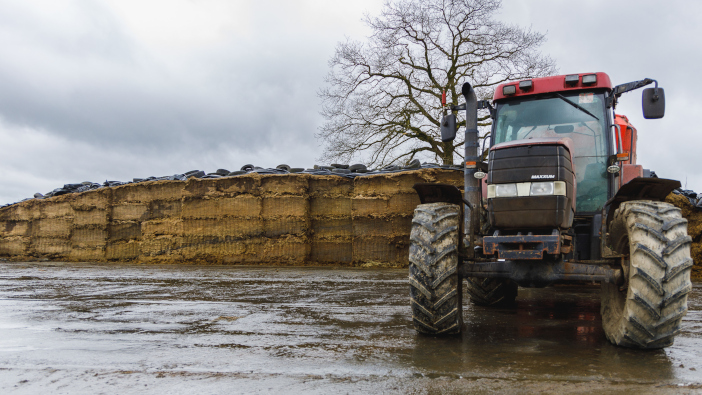With forage stocks depleted due to the hot, dry weather this year, quality will be of the utmost importance.
Results from 2,600 samples taken for ForFarmers show variations in mineral levels, as well as increased dry matter.
Product manager, Bruce Forshaw, says: “This year’s grass silages have been lower in chloride which we would expect to reduce the dietary cation anion balance (DCAB), but because potassium and sodium are higher than in 2024, the DCAB has increased.
“It is not a big shift but one to be aware of if you are relying on low DCAB diets to control milk fever.”
He also notes a downward trend in magnesium levels within grass silage, as well as slightly reduced copper and zinc.
Copper levels with 8mg in 2023, dropping to 7mg in 2024 and 6mg in 2025, while zinc has dropped from 32mg in 2023 to 27mg this year.
However, Bruce adds that supplementing 12kg of this average silage with a compound with a standard winter mineral pack would lead to an oversupply of both.
“We have also seen cobalt levels lower in 2025. This mineral is essential in the production of B12, which in turn is needed for energy metabolism,” says Bruce. “Drought can affect cobalt uptake as lack of moisture reduces the solubility of the cobalt ions in the soil.”
Other minerals have been affected by the drought, including iron, which averaged out at 258mg/kg DM, compared to 473mg/kg in the wet 2023 summer.
“It could be argued that, as iron is an antagonist, although copper levels are lower, the mineral could be more available to the cow.
“Providing the right vitamins and minerals is essential to support optimal milk yield and herd health, but more isn’t always better. Even a mild oversupply of nutrients can increase production costs, while significant excesses may lead to subclinical toxicity or, in extreme cases, serious health issues.”


